- J6053 Airfix Quickbuild Ford F-150 Raptor Grey
- DCC89 Gaugemaster Kato Class 800 Decoder Set
- 22-166 WSL Bachmann Scenecraft Permanent Way Workers
- GM2210501 Dapol Class 59/0 Diesel Loco 59 003 Yeoman Highlander
- Imperium5 Dapol Imperium Micro 6 Pin DCC Decoder with 4 function
- 32-646Z-DTSO-A Bachmann 4-TC DTSO Body ADB977687 BR Research
- 6572 Busch N/TT 60 Pine Trees
- 44-0031 Bachmann Scenecraft Wooden Lamp Hut
- DCC01 Gaugemaster Prodigy Express DCC Complete Starter Set
- L38950 WSL Liliput Interior Lighting Unit with Yellow LEDs
- 7S-006-025 Dapol 14xx Class Steam Loco - 1413 - BR Black
- A04021 Airfix Bristol Beaufort Mk.1
- 5502 Model Scene Leyland Olympian bus kit, London Metrobus
- 44-0199G Bachmann Scenecraft Boston Lodge Engine Shed - Green
- 4S-001-012S Dapol 78xx Manor Steam Loco - 7822 Foxcote Manor
- 36-063 Bachmann Branchline Class 411 Drawbars
- 55861 ESU LokSound V4.0 6 Pin Digital Decoder GWR Pannier Tank
- R970 Woodland Scenics DVD - The Clinic
- 43509 Vollmer HO Station Altenburg
- 32-333 Bachmann Class 25/3 D7660 BR Blue (Small Yellow Panels)
- OR76SCS2002 Oxford Rail Standard Cowans Sheldon 15T Crane LNER
- 3250 # RailMatch 250mls Jar Acrylic Thinner
- AFS-3 Plastruct Angle
- PKAF35013 AFV Club CVR(T) FV107 Scimitar
- SS5 Train Tech Sensor Signal - 4 Aspect Colour Light
- 82476 ESU LokSound V4.0 8 Pin Digital Decoder Tornado
- 20-010 Kato Ground Level 186mm Straight Track
- PO242 Metcalfe Tunnel Kit
- 32-640Z-TFK Bachmann 4-TC TFK Body S70859 BR Blue
- 0402 Slaters Plastikard 2mm English Bond Brick Red
- 42-0044 Graham Farish Scenecraft Concrete Footbridge
- 13405 Bachmann HO 1860 - 1880 Coach - Painted, Unlettered Green
- TR3512 Woodland Scenics Classic Tree - Early Light
- R7289 WSL Hornby Skaledale E. L. Sole - Newsagent
- 5918 Busch Yellow Flashers
- L265499 WSL Liliput Tank Wagon no: 565 327 - B.B.O.-ORION - DB
- R7272 WSL Hornby Skaledale Stone Bus Stop
- A1898 Woodland Scenics HO Rail Workers
- 17861 Bachmann ACF 36'6" Single-Dome Tank Car Allegheny Refining
- 922002 Rapido The Titfield Thunderbolt Pack
- 71-027 Bachmann Narrow Gauge Quarry Hunslet 0-4-0ST Margaret
- 36-038 Bachmann Y25 Type Bogies
- C8281 Scalextric Radius 3 Curve Inner Borders 22.5° x 4
- SFX21 Train-Tech SFX+ Sound Capsule Diesel Locomotive Continuous
- E99943 EFE Road Cravens RT Ensignbus Set RT1431 & RT1499
- SB003-006 LSWR Road Van Buffer Head
- C8282 Scalextric Radius 4 Curve Inner Borders 22.5° x 4
- GM2000106 Kato GWR Class 800/0 Paddington Bear Premium Train Set
- E84707 EFE Rail Class 15 D8235 BR Green (Full Yellow Ends)
- PN170 Metcalfe Low Relief Cinema Kit
- 961006 Rapido Not Quite Minks - LMS Acid Triple Pack
- C8280 Scalextric Radius 2 Curve Inner Borders 22.5° x 4
- 32-340A Bachmann Class 25/1 25057 BR Blue
- 393-228 Bachmann Dinorwic Slate Wagons with sides 3-Pack Red
- 02221 Noch single track straight tunnel
- PA39 Parkside by Peco Wagon Load Kit - Limestone
- 44-0153 Bachmann Scenecraft Lifeguard Hut
- 2207 RailMatch 18mls Pot Rail Blue Acrylic
- CK19 Wills Craftsman Kit Goods Shed
- 1240 Heljan Class 149 Driving Trailer BR green W56282
- 5136 Model Scene 1926 Thornycroft
- 32-550D Bachmann LNER A1 60163 'Tornado' BR Lined Green
- AQ0015 # Humbrol No.15 Midnight Blue 50ml Gloss Enamel Tinlet
- RT-N59-AI-005DC Revolution 59005 Kenneth J Painter Aggregate
- 7D-008-099S Dapol Class 08 Diesel Shunter 08 645 St Piran
- GM443 Gaugemaster Fordhampton Airfield Planes & Gliders Kit
- 2427 RailMatch 18mls Pot New Tarmac Acrylic
- DM75 Dundas Freelance 4 Wheel Panelled 3rd Class Coach
- 85139 Tillig Elite Adjustable straight track 67 70mm long
- GM57 Gaugemaster N Lit Buffer Stop on Track
- 242 Ratio Steel Trestle Kit
- 9157 Fleischmann Three Way Point for manual operation
- BAL-N-02 Proses Authentic Limestone Ballast In Grey Blend 1.4KG
- A1936 Woodland Scenics HO Wash Day Getaway
- 920007 Rapido Bedford OB Coach - FWO615 British Railways
- N-EAL-107L WSL Revolution Trains Ealnos JNA Wagon VTG mid blue
- 371-015TLSF Graham Farish Class 09 09006 Mainline Freight
- NBS006 Oxford Diecast Burlingham Sunsaloon in Northern Alexander
- R607 Hornby Double Curve 2nd Radius
A02109 Airfix Hawker Tempest Mk V
A02109 Airfix Hawker Tempest Mk.V 1:72 Scale Kit
Assembly Required - Paint & Glue not included
An aircraft which has to be considered one of the finest aeroplanes of the Second World War, the Hawker Tempest V could trace its design lineage back to the Hurricane fighters which proved so decisive during the Battle of Britain only two years earlier, but would represent the absolute zenith of piston engined fighter design. Indeed, when accomplished designer Sydney Camm was looking to produce his '˜Super Hurricane'™ replacement for the aviation saviour of the Battle of Britain, the aircraft he surely had in mind was the Tempest V. As it was, the Tempest is often confused with its predecessor in Royal Air Force service, the Typhoon, even though the two are very different aeroplanes. The original fighter replacement for the Hawker Hurricane was the Typhoon, an aircraft which attempted to combine the most powerful piston engine available at the time with a small, yet strong and heavily armed airframe. Although intended as an interceptor fighter, it became apparent during development that the new aircraft would not be able to fulfil this role, as the thickness of the wing was not conducive to high performance at high altitude. In fact, the Typhoon would endure quite a troubled development and service introduction, to the point where cancellation of the programme was seriously considered at one time. Nevertheless, the Typhoon would eventually go on to find its aviation niche as a hard-hitting ground attack aircraft and one which would come into its own during the time of the Allied invasion of Normandy. Aware that their Typhoon had great potential but was in need of improvement, the Hawker design team started work on a new fighter project, one which incorporated many of the same philosophies as Typhoon, but also, several significant modifications. Indeed, the new aircraft was initially referred to as the Typhoon Mark II, but this was changed to Tempest as the prototype aircraft'™s first flight approached. Although this was still a big aeroplane for a single engined fighter, its airframe was light and it would be powered by the massively powerful 24 cylinder Napier Sabre engine, a powerplant which would give the new fighter spectacular performance. Making its first flight on 2nd September 1942, the new Hawker Tempest featured a newly designed laminar flow wing, which was much thinner than the wing used on its predecessor and allowed the new fighter to slip through the air at incredible speed. At first glance, the Typhoon and Tempest do share many similarities, however, if you know where to look, it is not difficult to tell them apart. Without doubt, the wing is the most obvious distinguishing feature, as not only is this thinner than the one used on the Typhoon, it is also a completely different shape. With a straighter leading edge and more elliptical trailing edge, the Tempest'™s wing was designed for speed, even though it could still be used effectively in a ground attack role. Other Tempest design differences include a slightly longer nose and a tail section which appears to be much larger, with a more generous vertical stabiliser which features a pronounced dorsal fillet. During the prototype aircraft'™s maiden flight, it posted an impressive top speed of 477 mph in level flight, impressing both the design team and the watching Air Ministry. The Hawker Tempest V entered Royal Air Force service in early 1944, with the first two squadrons to receive the type having both previously operated the Typhoon. It was thought that managing the incredible power generated by the Tempest'™s engine could pose problems for pilots converting from smaller aircraft types and that former Typhoon units would be best placed to negotiate its squadron introduction. In advance of the D-day landings, Tempests were being used in a similar ground attack role to the one being flown so effectively by Typhoon squadrons, however, should it be required to make the shift to air combat operations mid-mission, the Tempest was much more suited to this task. Possessing significantly greater range than the Typhoon, Tempests could loiter in the combat zone for longer periods, allowing offensive strikes deeper into occupied Europe, or allowing pilots to wait patiently for the Luftwaffe to come up and fight, where they could show them what their new fighter could really do. As the fastest Allied fighter at low and medium altitudes, Tempest squadrons were held back for home defence duties in the weeks which followed the successful D-day landings, due to the onslaught of a sinister new weapon, the V-1 '˜Doodlebug'™ pulse jet flying bomb. The Tempest proved to be an excellent V-1 killer, using the speed of the fighter, effectiveness of its guns and bravery of its pilots to destroy large numbers of these terrifying weapons before they could wreak their havoc on British towns and cities. Britain'™s most effective force against these indiscriminate weapons, hundreds of Doodlebugs were shot down by the RAF'™s Hawker Tempest V squadrons, with Squadron Leader Joseph Berry proving to be the most proficient at this work, with no fewer than 61 V-1 '˜kills'™ to his name. With the V-1 threat diminishing, the RAF'™s Tempest V squadrons were free to embark on aggressive seek and destroy missions into occupied Europe, using the speed, range and firepower of their latest fighter to great effect. Looking for potential V-1 launch sites and increasingly, the new German jet fighters which had started operating against the Allied air forces, the Tempest began to show that it was undoubtedly one of the most capable fighting aeroplanes in the world. Indeed, it has been reported that the aggressively flown Tempest was the Allied aircraft Messerschmitt Me262 jet pilots most feared during those early days of jet powered operations, particularly if they were caught during the landing and taking off phases of flight, when their jets were much more vulnerable. There is no doubt that the Hawker Tempest V was a real brute of an aeroplane, fast, heavily armed and possessing performance which could better any fighter the Luftwaffe had in service, perhaps with the exception of the Me262 at full speed. Pilots who had experience flying both the Tempest V and its predecessor, the Typhoon, describe the difference as being like night and day - they actually said that it was like comparing a cart horse with a race horse. Although this seems a little harsh, as they flew the aircraft in combat, we should certainly bow to their judgement. Although appearing relatively late in WWII, the Tempest V still takes its place as one of the most effective piston engined fighters of the Second World War and was perhaps the '˜Super Hurricane'™ designer Sydney Camm had always envisaged developing.
Tech Specs
Item Length - Without Packaging (cm) 14.25
Item Scale 1:72 Scale
BAE SYSTEMS is a registered trade mark of BAE Systems plc.
Contents - Sprues & decals
Finish - Plastic
Number of Scheme options - 2
Skill Level - 1
Wingspan (mm) - 173
-

Academy Models
-

Accurascale
-

AFV Club
-
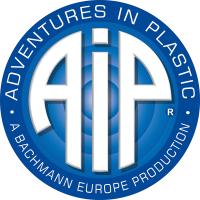
AIP by Bachmann
-

Airfix
-

Arnold
-

ATD Models
-

Auhagen
-

Bachmann
-

Bachmann Narrow Gauge
-
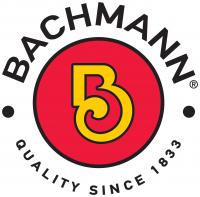
Bachmann USA
-

Bassett-Lowke
-

Berko
-

Busch
-

C Rail
-

Cambrian
-

Corgi
-

Cornerstone
-

Dapol
-

DCC Concepts
-

Deluxe Materials
-

Dundas
-

Easy Model
-

Eckon
-

EFE Rail
-

EFE Road
-

Emhar
-

ESU
-
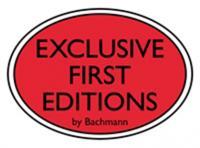
Exclusive First Editions
-

Faller
-

Fleischmann
-
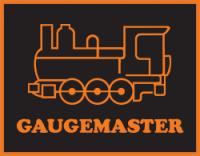
Gaugemaster
-

Gecko Models
-

Golden Valley Hobbies
-

Graham Farish
-

Greenlight Collectibles
-

Heljan
-

HK Models
-

Hornby
-

Hornby International
-

Hornby TT:120
-

Humbrol
-

I Love Kit
-

Jouef
-

K&S Metals
-

Kadee
-

Kato
-

Kernow Models
-
Kestrel
-

Kibri
-

Lenz Digital
-
LightCraft
-

Liliput
-
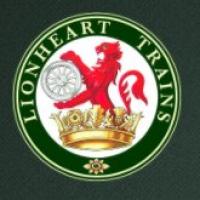
Lionheart Trains
-

Merit
-

Metcalfe
-

Middleton Press
-

Mirror Models
-
Miscellaneous
-

model scene
-

ModelMaker
-

Murphy Models
-

Noch
-
OPC
-

Oxford Diecast
-
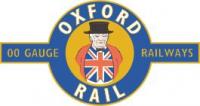
Oxford Rail
-

Parkside by Peco
-

PECO
-

Plastruct
-
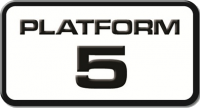
Platform 5
-

PM Model
-

Preiser
-

Proses
-
RailMatch
-
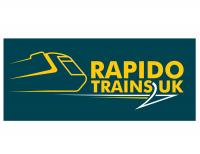
Rapido
-

Ratio
-

Revell
-

Revolution Trains
-

Rivarossi
-

Roco
-

Roden
-

Scalextric
-
Shawplan
-

Slaters
-
Smiths
-

Soundtraxx
-

Springside
-
Star Tec
-
Strathwood
-

Superquick
-
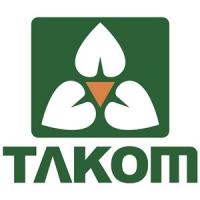
Takom
-
Taliesin
-

Tamiya
-

Thunder Model
-

Tillig
-
Tiny Signs
-

Toyway
-
Tracksetta
-

Train Control Systems
-

Train-Tech
-

TrainSave
-

Trix
-

Trumpeter
-

Viessmann
-

Vollmer
-

Wiking
-

Wills
-

Woodland Scenics
-

Xuron

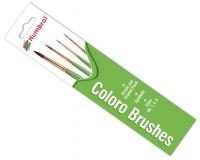

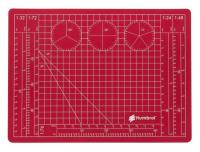



Connect with us socially

